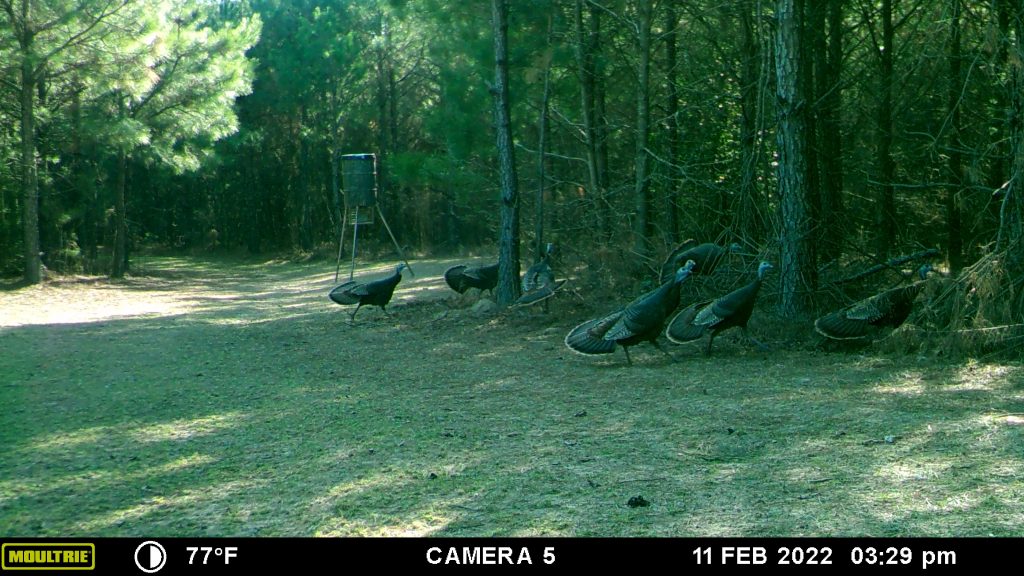High-Tail It Outta There
Dr. Tom takes a look at fan tail posture and its meaning.
"I got this photo on a trail camera. I thought it was strange that all these hens were exhibiting the same posture. I am not sure if there was a predator that the camera didn’t catch that would trigger this behavior as they are headed in the wooded area. Can you shed some light on why all of the hens would behave this way?" —Josh Cunningham, via email

Photos like the one you sent to us provide a snapshot in time, but, pending the timing between images, they do not provide an exact clue into what took place, either before or after the snapshot. Wild turkeys generally fan their tails in a horizontal position for a couple of reasons. The threat display is one of those reasons. This display is used for harassing flatmates when they invade personal space, expressing dominance, or frightening small predators like snakes or domestic cats. It consists of the fanned tail held horizontally and the neck stretched out in line with the tail. This posture is usually accompanied by challenge purrs and quick movement toward the “threat.” Most of the time only one individual in the flock will display in that manner if it is an expression affecting the pecking order. If there is a minor threat from a less dangerous predator, more than one bird might display.
Frightened or highly alerted wild turkeys spread their tails in a horizontal position just before taking flight in preparation for lifting off. This group of hens was on the move. They appear to be on “high alert” based on the way their heads and necks are held. The birds’ eyes appear to be focused on something above them as they head for the woods and safer cover. They seem to be ready to fly but are opting for the safety of the forest canopy rather than flying away. I have observed this type of behavior when a group of wild turkeys saw an avian predator at a distance. Though there may not be an immediate threat, the birds are taking no chances.
I have observed wild turkeys acting this way a few times. In one instance where I saw similar behavior, the threat was posed by a bald eagle high above a flock of adult toms. That flock opted for moving into the woods rather than flying. I don’t think that eagle had any real interest in the gobblers, but the toms were not waiting to see. Another time there was a real threat from a golden eagle. The birds ran with their tails fanned into the woods and then flushed as the eagle dove after them into the winter woods. In that case, I think the flushing of 15 or so turkeys confused the eagle, and it came up empty-handed despite it being a close call.